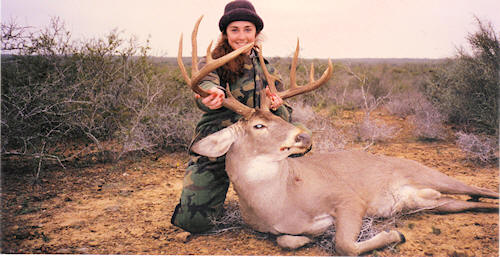Improving wildlife populations is all about habitat management. Landowners can improve deer hunting through wildlife management practices, but white-tailed deer still need high quality native goods. An early and abundant acorn crop, combined with new growth of native vegetation may force Texas deer hunters to stray from supplemental food sources during the 2009-2010 general deer hunting season, which opens November 7.
Reports from Texas Parks and Wildlife Department field biologists indicate above average mast crop production and an early acorn drop. Recent rains across much of the state have also helped generate forb production, adding to the availability of native food sources for whitetail. “It’s been at least three years since ground moisture has been this good at this time of year,” said Mike Krueger, TPWD district wildlife biologist in Kerrville. “It looks like springtime in the Edwards Plateau at this time.”

Krueger noted the warm-season plants have put on a final burst of growth and flowers and there is a flush of early growth of cool-season grasses and forbs. That will probably contribute to a slow deer season for hunters, especially early in the season and especially for those hunters that are dependent on hunting over feeders.
“There is an abundance of food sources for deer right now, and deer movements are reduced because they don’t have to move as far or as often to keep their bellies full,” Krueger added. “Deer don’t appear to be coming to feeders as often or as regularly as they would if it were still dry.”
The only consolation is that bucks are becoming more active due to the onset of the rut in the Hill Country, so they’ll be moving around as they typically do during the rut, regardless of the condition of the range.
Although the range conditions are good to excellent right now, the rains came too late to help with this year’s buck antler growth which is probably no better than average throughout the Edwards Plateau region, or with the fawn production that is also no better than average. But if it continues to rain throughout the fall and winter, the stage is being set for better antler growth and fawn production next year.
While recent rains have improved range conditions across much of the state, whitetails in South Texas are battling through an extended stress period that started with last year’s rut, according to biologists.
“Last season the rut was later and more spread out than normal and this did not fare well for mature deer,” said Daniel Kunz, TPWD biologist in Alice. “By the first of February bucks were extremely drawn down and numerous reports of early antler shedding were occurring; an indication that bucks could be in poor shape. This will likely affect antler quality.”
Whitetail hunters should expect a reasonable number of 2 1/2/ year old bucks and 51/2 to 7 1/2 year old bucks as 2002-2004 and 2007 were good fawn production years resulting in good carry over, added TPWD biologist Dustin Windsor in Cotulla. Properties that practice wildlife management with emphasis on whitetail deer will be in really good shape. The deer will be healthy and bucks should have better than average antler growth. Look for good deer hunting and take full advantage of the rut in your area.